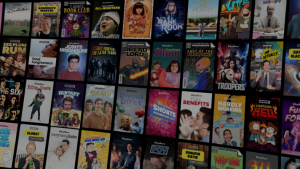Facing growing scrutiny over censorship and security concerns, TikTok is borrowing a few pages from a playbook now standard at many American tech giants, in an effort to earn the trust of US users and lawmakers. The Chinese-owned video app said in October it would invite outside experts to review some of its content moderation policies, just as Facebook and YouTube have in the past. And on Monday, TikTok released its first ever transparency report, revealing it received 298 legal requests for user information and 26 government takedown requests during the first half of 2019.
“To foster candid dialogue essential to earning and maintaining trust, we’re releasing our first Transparency Report this year to show how we responsibly engage with government bodies in the markets where TikTok operates,” Eric Ebenstein, TikTok’s director of public policy, wrote in a blog post.
Access Now, the digital rights group, calls transparency reporting “one of the strongest ways for technology companies to disclose threats to user privacy and free expression.” Sixty tech companies released transparency reports in 2018, according to its index, most of them in North America. But TikTok’s report doesn’t necessarily address its critics’ biggest worries.
TikTok’s transparency report shows that from January 1 to June 30 of 2019, the platform received no takedown or user information requests from China, where the app isn’t available, but where its parent organization is headquartered. That isn’t necessarily surprising: Facebook, which also isn’t available in China, also received zero requests from Beijing during the same time frame, according to its own transparency report. Google similarly reported receiving no requests for user information from China, where its services can’t be accessed because of government censorship. It did receive 133 content takedown requests for over 1,500 YouTube videos, almost all of which it declined to remove.
TikTok was launched in 2017 by ByteDance, a Chinese tech giant and one of the most valuable startups in the world, which already had a similar app inside China called Douyin. The same year, ByteDance bought the American lip-syncing app Musical.ly, which it later absorbed into TikTok. The company has said that it operates independently from ByteDance and doesn’t store user data inside China’s borders. But many of TikTok’s critics have maintained that a Chinese-owned tech company can’t be trusted, given the country’s track record when it comes to censorship and surveillance.
In October, senators Chuck Schumer (D-New York) and Tom Cotton (R-Arkansas) sent a letter to US intelligence officials asking them to look into potential national security risks posed by TikTok. The next month, the Committee on Foreign Investment in the United States (CFIUS), which reviews national security implications for such deals, reportedly opened an investigation into ByteDance’s $1 billion acquisition of Musical.ly. Both the US Army and Navy have recently banned personnel from using TikTok on government phones over cybersecurity concerns, according to Military.com.
Is there something about TikTok you think we should know? Contact the author at louise_matsakis@wired.com or via Signal at 347-966-3806. WIRED protects the confidentiality of its sources, but if you wish to conceal your identity, here are the instructions for using SecureDrop. You can also mail us materials at 520 Third Street, Suite 350, San Francisco, CA 94107.
Content moderation is another issue of concern. After the Hong Kong protests began, users and media started looking more closely at how the event would be handled on a Chinese-owned platform. In September, The Washington Post reported that there were few videos on TikTok about the ongoing demonstrations, suggesting it was possible China asked the company to censor them. TikTok’s transparency report indicates that may not have been the case, but it only includes requests made through the end of June—not when the protests began to escalate throughout the summer. The report does not cover the Douyin app.
TikTok’s transparency report doesn’t address other ways ByteDance and China may influence content on the app, like by shaping moderation rules (TikTok has said its US team is now responsible for writing US policies). Unlike Facebook and YouTube, TikTok has yet to release figures about how often moderators remove content in accordance with its Community Guidelines. That kind of tracking, which is recommended as a best practice by content moderation experts, would make clear how TikTok enforces its own rules. The company’s current transparency report only discloses how often governments made requests, not how often users reported content to TikTok.
TikTok’s transparency report covers a relatively small number of cases, especially given the app’s large user base. The country with the largest number of government requests for user information, at 107, was India, where TikTok reportedly has hundreds of millions of users. The app was briefly banned in the country last year, after officials said it was encouraging young adults to participate in “cultural degradation.” TikTok says it honored only 47 percent of the requests. Next in the report came the United States, with 79 requests for user information. TikTok says it provided at least some data in response to 86 percent of US requests.



